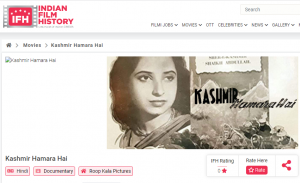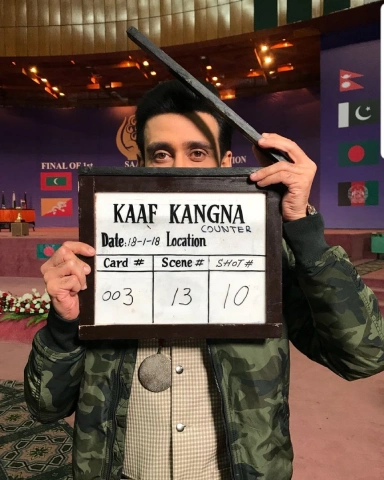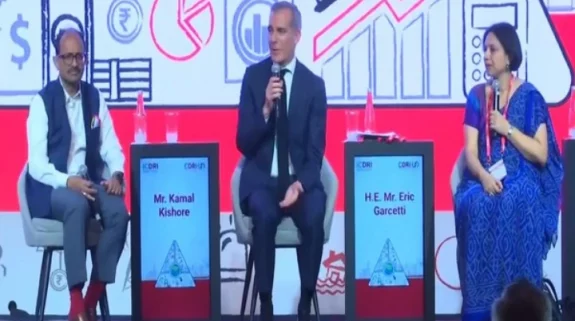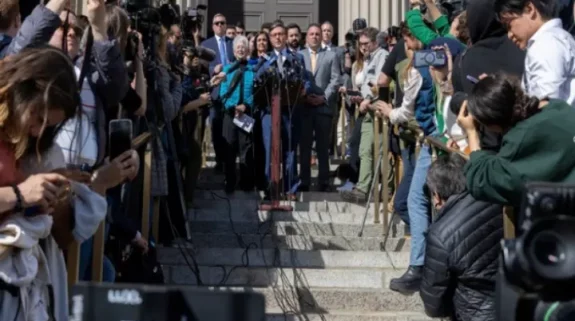Kashmir in India is a route to tourism and prosperity. In Pakistan, it sadly leads to terrorism and diplomatic disaster for an ever-beguiled country. Every time, since 1947, India and Pakistan have entered into a dispute or waged a war, Lollywood, the Pakistani film industry, has churned out movies that spin and peddle propaganda of Pakistan’s military-political establishment. Jammu and Kashmir is shown as maqbooza (occupied) and its public reeling under immense oppression by Indian armed forces. However, like its diplomacy, Pakistani cinema too has failed to fetch much attention from listeners and viewers. Besides feeble feedback from Pakistanis, these movies didn’t catch the attention of global cinephiles either.
It is as if Pakistan’s celluloid jihad on Kashmir has seen resistance from its own Awam (public) and indifference from the world.
Lollywood’s Recent Offerings
On August 5, 2019, Articles 370 and 35(A) of Indian Constitution giving J&K special status were nullified. The state was divided into two Union Territories. As expected, Pakistan went ballistic in its reaction. Fake news about the killing of Kashmiris were spread by prominent Pakistani people, including former high commissioner to India Abdul Basit and Mushal Mullick, wife of now life imprisonment serving separatist leader Yasin Malik. Meanwhile, some filmmakers announced to present (or recycle) the Kashmir saga on celluloid anew. But they merely remained announcements and no project could take off. Then, the Pakistani military’s publicity wing Inter-Services Public Relations (ISPR) hired popular dramatist-poet Khalilur Rehman Qamar to weave a story around Kashmir and also direct it as his debut as a film-director.
The ISPR-supported movie was named Kaaf Kangana. The name Kangana suggestively spoofed on Indian actress Kangana Ranaut and the female protagonist was portrayed as a Hindu girl hailing from India who fell for a handsome hunk from Pakistan. They are also shown meeting at a SAARC forum. As expected, in the end, the Pakistani boy returns home victorious both in love and war. The film was full of clichéd references to Kashmir and Pakistani valour, but it bombed at the box office. The critics called it a massive disappointment on the face of Lollywood. Qamar, who is known for his meaningful dialogues, dished out an interesting line: “Is Haveli Par Muhabbbat Ka Shraap Hai, Yahan Muhabbat Kamyaab Nahi Hoti (This haveli is cursed, no love flourishes here)”. He perhaps commented this about Pakistan which is still longing for love from itself and the world.
The film was released on October 25 and by the end of October, it went out of flavour too, grossing not even half of the producer’s money.
Post Kaaf Kangana fiasco, no producer, not even ISPR, has dared to risk making a movie on Kashmir.
Prior to Kaaf, two Pakistani movies centered on Kashmir had done somewhat well: Azaadi (2018) and Waar (2012). As their names suggest, both the flicks contained high-octane anti-India masala with intricate action sequences. They were produced by independent filmmakers and invested hugely in gloss and modern techniques to enliven cinematic experience that was hitherto unknown in Pakistan. Luster gave some respite to Lollywood as the portrayal of Kashmir and India-backed violence served only as essentials of stories that lingered in the minds of the audience for a while and then vanished. At the same time, some Indian movies, including Race 3 and others were released in Pakistan and raked in almost equal moolah.
Kashmir on celluloid in 1947 and after
The first-ever Pakistani film was released on its first birth anniversary, 14 August 1948. No surprise that it was named Kashmir Hamara Hai. However, there was a twist. Kashmiri-origin director Rafiq Chaman’s movie exposed the atrocities committed by tribal raiders in Kashmir and showed Kashmiri fighting against those marauders. The film hit the screens when the war was still being waged. There is no information available on how the audience reacted when the film was screened in Pakistani theatres, however, one February 11 article in the leading Pakistani newspaper Dawn says that it acquainted Pakistanis with what was happening on the war front and that it was during the film’s production that Captain Sarwar Shaheed (the first Nishan-e-Haider award recipient) was put to death on July 27 in the Uri sector.
Dawn further claims that Kashmir Hamara Hai was Lollywood’s debut, while the word Lollywood is a portmanteau of Lahore and Hollywood, coined in 1989 by Glamour magazine gossip columnist Saleem Nasir.
In fact, Kashmir Hamara Hai is an Indian movie that showed the struggles of Indians (Kashmiris) against 1947 Pakistani tribal raiders. It was nevertheless released in Pakistan either by mistake or perhaps with some alteration. However, as soon as it was realized that it was an Indian movie that conveyed the saga of Pakistani atrocities and that Indian actors of the movie were getting popularity in Pakistan, it was pulled down from theatres. No print of Kashmir Hamara Hai is now traceable in Pakistan. Unfortunately, in its hurriedly written piece on Kashmir-centric movies, the Dawn, the most reputed daily of Pakistan, glossed over such a glaring and grave detail.

The leading roles in Kashmir Hamara Hai were played by then popular Indian actors like Meera Misra, Paresh Bannerji, Pahari Sanyal, and Hiralal.
The politically motivated film Inquilab-e-Kashmir was also released later that year, but it was unable to cut through red tape. It was the brainchild of actor Naeem Hashmi who took the cast and production crew to the war front. The film was pulled from theatres after only one show at Lahore’s Ritz Cinema. Though Pakistan had gained independence, it was still part of the British dominion and making a film on the Kashmir issue was asking for trouble. Actor Allaudin, who later appeared in numerous films, starred under his brother’s name, Riaz, in this movie. Kashmiri leader Sardar Ibrahim, who later served as the president of POK, played a crucial role in the hour-long movie.
There is no record of whether Inquilab-e-Kashmir was later screened in Pakistan and neither any print or web write-up on the movie is available. Surprisingly, it doesn’t even figure in the search engine of the ISPR.
Actor/director Zahoor Raja’s action film Jihaad was released in January 1950. Zahoor Raja had a few successes in India before Partition and his film allowed filmmakers to explore subjects like jihad, yet many distanced themselves, fearing the government’s wrath. There is no record available of even this Jihaad’s success or failure at the box office.
After these failures, there was a complete lull in Pakistan filmmakers’ fixation with Kashmir. Some of them were coaxed to crow the patriotic fervour after the 1965 war. The idea of Sadaaye Kashmir was conceived and director Khalil Qaiser had to direct the film with popular actors Kamal and Rani in the lead with Lehri, Meena Shoori, Habib, and Tarana featuring in prominent roles. However, Qaiser’s murder and several production delays affected the film. It was released as Do Baghi in 1970 and sank without a trace. No archive in Pakistan has recorded how Pakistanis reacted to the story of Kashmir as seen by the Pakistani establishment.
The most prominent Pakistani movie to date on Kashmir is Riaz Shahid’s magnum opus Yeh Aman (1971). It tried to portray the so-called Indian atrocities in the Kashmir valley. Journalist-turned-writer Shahid was a torchbearer for highlighting social issues, and he tried to illustrate the same in the script. However, the censor board was quite brutal with the movie. The Tashkent Accord of 1966 was still active and a clause stated that both India and Pakistan would discourage the use of any propaganda against each other. Presented as Aman, the film was released as Yeh Aman after several cuts. Shot in POK, it was released days before the 1971 Bangladesh Liberation War and failed to portray Shahid’s vision of socio-economic realities that beget all conflicts, including the India-Pakistan one on Kashmir.














